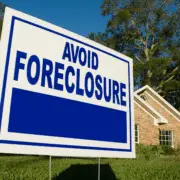Affordable housing in Montgomery County is in crisis, prompting the county to adopt the role of a benevolent real estate investor. The Laureate, an apartment complex marketed as “inspired living,” is central to this initiative. Located just outside Washington, D.C., it is designed to attract young professionals while also serving as a public housing project. The government agency, Housing Opportunities Commission (HOC) of Montgomery County, holds a controlling 70% stake in the building, which allows it to reserve 30% of its 268 units for affordable housing, significantly reducing rents for residents like Kadiatou Sylla compared to the market rate (The New York Times).
The affordable housing crisis in the United States is so extensive that finding a starting point for solutions is challenging. Policymakers have tried to address the housing unit shortage by relaxing zoning and building rules to accelerate construction. However, with much new development targeting high-end buyers and renters, others argue that only interventions like rent control, subsidies, and a resurgence of public housing can genuinely lower housing costs. The Laureate project aims to combine these approaches by using a new $100 million fund created by Montgomery County. The fund allows the HOC to invest directly in new projects and use its ownership position to trade profits for lower rents, thereby acting as a benevolent investor.
Over the past 50 years, the term “public housing” has been associated with failure, leading lawmakers to create programs that either demolish government-owned apartments or transfer them to the private sector. Traditional public housing, financed by the Department of Housing and Urban Development (HUD) and operated by public housing agencies, is in continuous decline. Currently, much of the federal housing money is channeled through the private sector, with Section 8 vouchers paying private landlords market rent for tenants who cannot afford it, and the Low-Income Housing Tax Credit providing tax breaks to corporations that invest in subsidized buildings operated by nonprofit and for-profit developers.
However, Montgomery County has taken a different approach by steadily increasing its stock of government-owned housing over the decades and broadening its definition. The demand for affordable housing in the Washington region and other high-growth metropolitan areas far exceeds what federal housing programs can provide. As a result, the county is attempting to bridge the gap, although it still faces a housing shortage and opposition from not-in-my-backyard (NIMBY) politics. Additionally, some housing, like the Laureate, serves middle-class tenants rather than those earning minimum wage. Nevertheless, experts believe that the HOC’s direct role in expanding housing supply is crucial to curbing rent increases, a significant contributor to inflation and a major expense for most tenants.
While the Laureate serves as a promising model, the solution to the affordable housing crisis requires a multifaceted approach. Chelsea Andrews, H.O.C.’s executive director, highlighted the difference in priorities between the private sector and the public sector, stating, “The private sector is focused on return on investment. Our return is public good” (The New York Times). This perspective underscores the importance of government involvement in addressing the housing crisis. Public-private partnerships like the Laureate can be part of a larger strategy to provide affordable housing and prevent displacement of lower-income residents.
Nonetheless, there are still challenges to address. For instance, the Laureate predominantly serves middle-class tenants, leaving those earning minimum wage or less without many options. To truly solve the affordable housing crisis, a broader spectrum of income levels must be considered, and more comprehensive solutions implemented. This could include a mix of rent control, subsidies, increased public housing, and zoning law reforms. Moreover, the NIMBY politics that have intensified the housing shortage must also be confronted. A more inclusive dialogue that engages all stakeholders, including current residents, prospective tenants, policymakers, and developers, is necessary to create a more equitable housing landscape.
Ultimately, the Laureate is a step in the right direction, but it is just one piece of a much larger puzzle. As the demand for affordable housing continues to outpace supply, innovative solutions and a commitment to public good will be essential in addressing one of the most pressing issues of our time.
Related posts:
 Zillow Introduces 1% Down Payment Option Amid Affordability Crisis
Zillow Introduces 1% Down Payment Option Amid Affordability Crisis
 FHFA Conforming Loan Limit Hike to $766,550 in 2024: Implications and Analysis
FHFA Conforming Loan Limit Hike to $766,550 in 2024: Implications and Analysis
 Personal Loan vs. Equity Loan: 5 Main Differences You Need to Know Now
Personal Loan vs. Equity Loan: 5 Main Differences You Need to Know Now
 World Architecture Festival 2023: A Convergence of Innovation and Design in Singapore
World Architecture Festival 2023: A Convergence of Innovation and Design in Singapore
 Construction Costs in 2024: Navigating the New Era of Home Building
Construction Costs in 2024: Navigating the New Era of Home Building




